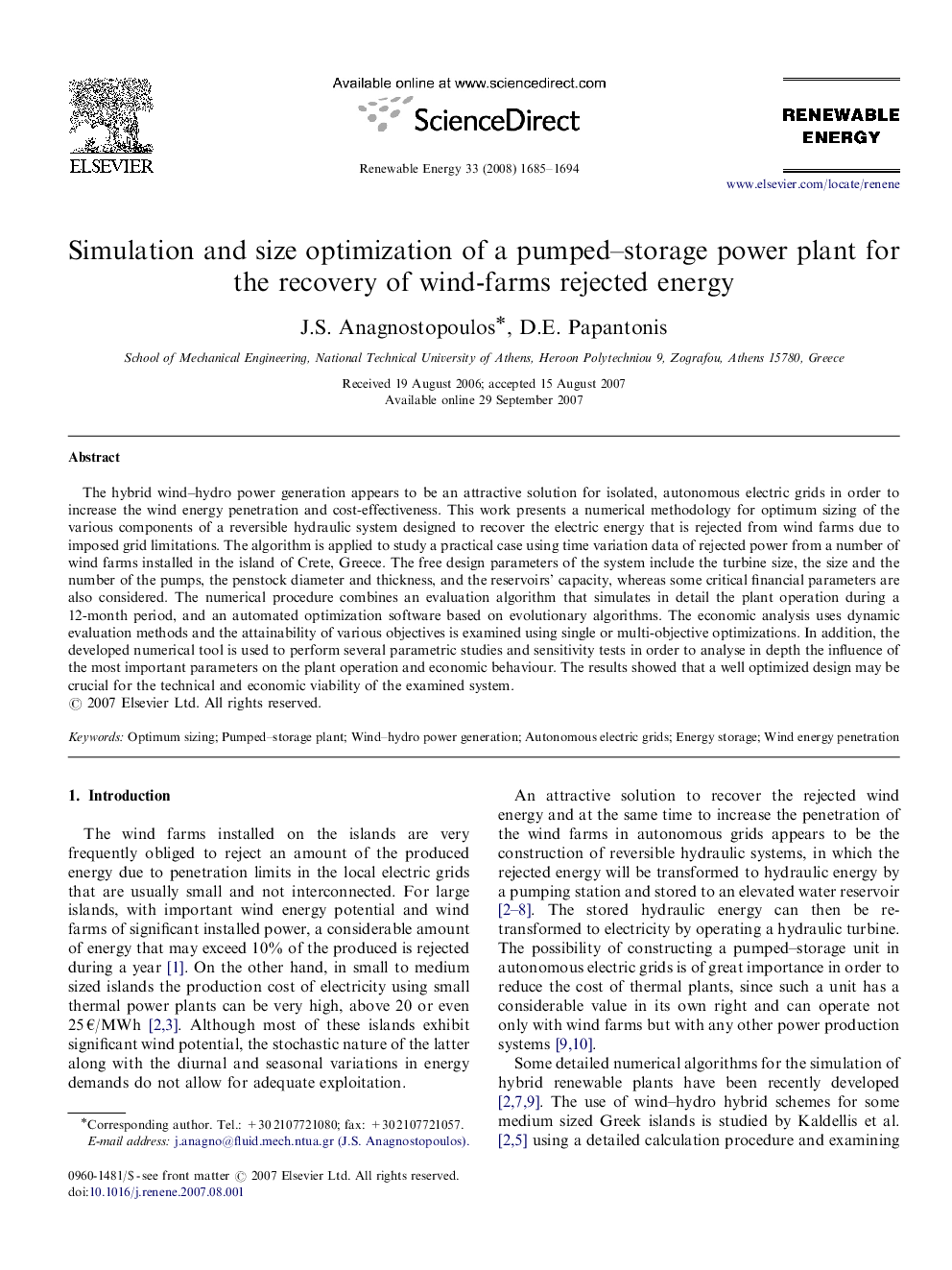| Article ID | Journal | Published Year | Pages | File Type |
|---|---|---|---|---|
| 302676 | Renewable Energy | 2008 | 10 Pages |
The hybrid wind–hydro power generation appears to be an attractive solution for isolated, autonomous electric grids in order to increase the wind energy penetration and cost-effectiveness. This work presents a numerical methodology for optimum sizing of the various components of a reversible hydraulic system designed to recover the electric energy that is rejected from wind farms due to imposed grid limitations. The algorithm is applied to study a practical case using time variation data of rejected power from a number of wind farms installed in the island of Crete, Greece. The free design parameters of the system include the turbine size, the size and the number of the pumps, the penstock diameter and thickness, and the reservoirs’ capacity, whereas some critical financial parameters are also considered. The numerical procedure combines an evaluation algorithm that simulates in detail the plant operation during a 12-month period, and an automated optimization software based on evolutionary algorithms. The economic analysis uses dynamic evaluation methods and the attainability of various objectives is examined using single or multi-objective optimizations. In addition, the developed numerical tool is used to perform several parametric studies and sensitivity tests in order to analyse in depth the influence of the most important parameters on the plant operation and economic behaviour. The results showed that a well optimized design may be crucial for the technical and economic viability of the examined system.
